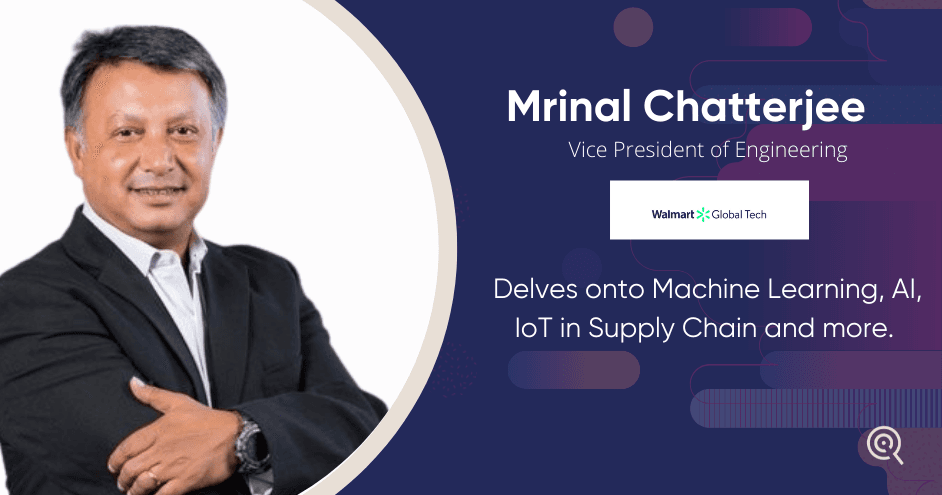
Mrinal shares,
Walmart has been in the business for like 57- 58 years now. Data has been front and center for us to be able to build on such a large operation. We run about 11000 stores worldwide with close to 4600-4700 stores in the US. So data is an absolute integral part of it and there’s a lot of places like our shopping experience, mobile apps or desktop apps and supply chain and a lot of other things that we do in terms of merchandising decisions and pricing decisions to a lot of it is driven through data science and machine learning algorithms. I think the way I internalize it is I think dugs challenge to us is to think all across not only some of these critical high transaction king of systems but think about every place where we are building platform services how do you make data as an integral decision making in terms of your architecture choices. So that we can leverage machines, where machines are good at, and leverage human Intelligence with our large workforce and deep retail experience; where we leverage humans and our associates’ knowledge to make decisions where machines might be imperfect. Things which way machine can with the right amount of the data trading and expect that can drive a lot of right decisions, that just put that. So a lot of our application designs, apps, or services are now data science has become an integral part of it. In fact, if I look at my team, in the last year one of the single job families which have the highest amount of growth has been the data science and machine learning engineers. The core of a retail business is for us to be able to provide competitive prices to our customers. The supply chain is a disproportionately high cost and especially in certain kinds of merchandising like fresh produce and something like that it is absolutely critical because you need to have temperature control, cold storage, and proper transportation needs to have. So we are disproportionately deploying IoTs in our refrigeration platform. in managing. We are getting their feedback from our thermometers in terms of what temperatures are and is really helping us sort of not only maintain the freshness but also the amount of energy consumed to keep them fresh, and not sure if you know that we have made a promise to get rid of 1 billion tons of greenhouse gases from our supply chain by 2030. So this is a big initiative, we are doing a lot of things beyond just this, but coming back like IoT is our front and center. Our stores where our fresh produce is kept; the supply chain where our fresh produce is in transit; our trucks so that we continue to not only be efficient but deliver the freshest produce to our customers. All that we do is a lot of planning and execution rigor that needs to happen because, unlike general merchandise, right like a poster or something like that, it has a long shelf life and they are not perishable. So at what time they are picked from by the farmers, how much time it takes for the product to ripe at the shelf, all of that planning needs to sort of come to probe into the process. In cold storage, there is a certain trait each of those vegetable needs in terms of the amount of moisture, the amount of temperature, and things like that, all of that comes into the picture to make sure that by the time it gets to your fridge or when you come into our grocery stores, It stays fresh it is at the right optimum place. And then again we have bundles where, for example, if you buy bananas, we know when people are buying bananas are like a dozen or so, the consumption will carry on for days or so, like there as some other things like watermelon, chances are, you want to consume it in a single time. So all of that comes into the planning process for merchandisers, or buyers or suppliers into an integrated supply chain that we come to know that an item is coming into an ecosystem even before it comes into it. So that we can do our own planning process, what would kill this whole thing is, if we have lagged in our processes that the item is sitting too long in our warehouse or the sitting too long in our supplier’s warehouse. The supply chain becomes an extremely integral part of it and coming back to your question about IoT, this is where IoTs are coming in place and helping us. https://youtu.be/zEQI6UDRe4U


